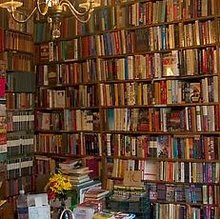Tuesday, August 15, 2006
Let Icons Be Icons
Why did top agent Neil Olson switch to the other side of the desk to produce a richly readable and probably very commercial debut thriller? “Stories, which was to say, the chaos of life made coherent, this is what compelled him,” says a dying old man early in The Icon. And what a story Olson has dreamed up: the search for an ancient object of Greek Orthodox art called the Holy Mother of Katarini, supposedly destroyed during World War II by Nazis or stolen by partisans, which has suddenly made a miraculous reappearance.
Before you mutter “Aha -- The Da Vinci Code, with a Greek accent,” consider this: Olson's story would be a memorable one in any publishing climate, and his writing ranges from vivid battle scenes between German troops and Greek guerrilla fighters to an extremely evocative description of the icon itself: “The eyes drew you in… Large, dark brown almost to black, and almond-shaped, in the favored eastern style. Penetrating, all-knowing, forgiving, or rather ready to forgive, but requiring something of you first.” Doesn't that make the Mona Lisa sound like a second-rate piece of portraiture?


